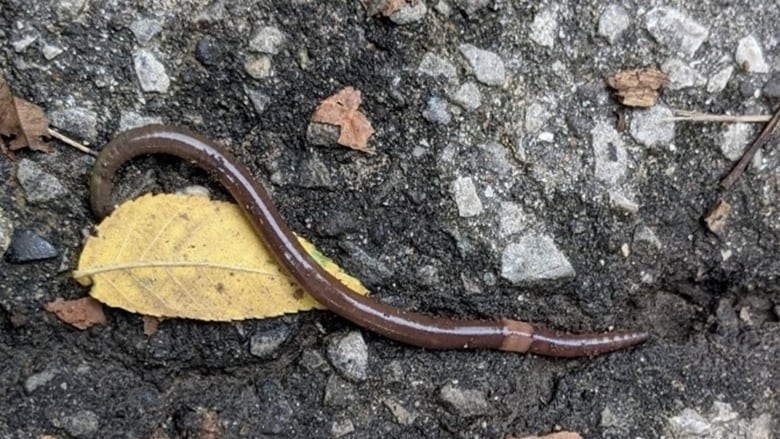With spring planting comes digging, with digging comes the inevitable run ins with earthworms. The harmless, beneficial, soil regenerators are essential for garden health.
But local gardeners may be in for a bit of a shock this spring if they unearth dozens of thrashing jumping worms, a new species first identified in Ontario last summer.
“The wriggling and thrashing is usually what differentiates it from the vast majority of other earth worms because they do act quite unique and different in that way,” says Colin Cassin, invasive species policy manager at the Invasive Species Centre in Ontario.
Cassin says that of the 20 types of earthworms found in the province today, including jumping worms, only two are native to Ontario.
Those two species are only found in highly wooded areas, and are not the ones used as fishing bait or the ones that turn up after a storm.
He says these little guys can have substantial ecological impacts.
“All of those species do have negative impacts on the environment.”
The problem with jumping worms is they have the same negative impacts but reproduce at much higher rates. "So those impacts are magnified,” says Cassin.
According to the Invasive Species Centre, not only do jumping worms outcompete other beneficial earthworms, but their larger castings degrade soil quality, leaving it inhospitable to many native plant species and susceptible to increased erosion.
And since they are voracious eaters, they quickly consume the top layer of dead leaves and other organic material, making it difficult for plants to remain rooted and allowing nutrients to be washed away by rain.
There were a number of reported sightings last year including some in Dundas, near the Hamilton area.
more worms im so sorryhttps://t.co/7qTwzqBxXghttps://t.co/Clb38UdIFl
— Chris Baker (@chrsbakr) April 14, 2022
“This is the first in Canada for jumping worms. Jumping worms are pretty established in a number of Great Lake States or across the border. They haven’t been identified yet because we don’t know where they are specifically right now,” Cassin adds.
“With invasive earthworms, once they become established, the conversation tends not to be how do we get them out of here but how do we control them, how do we manage them.”
Cassin says their main goal is prevention and trying to get anyone who does see them to report them online through a tool called EDDMaps which is a website that is used for reporting invasive species and tracking them.
“We haven’t heard of any reports in Cambridge yet, but we are expecting a few this summer,” says Alissa Fraser, conservation technician at rare Charitable Research reserve in Cambridge.
“The best thing people can do if they see them is to keep them from spreading. Don’t throw your dirt here or somewhere else. If your soil has them in it, try putting them in a garbage bag, tightly closed into the sun to kill them.”
Fraser says that most invasive plant or bug species generally were brought into Ontario and spread through the province by human methods, such as pollen sticking to pants, logs for campfires being transported between towns or cities and throwing unwanted plants into ravines.
“All these things that people maybe don’t think about, they have consequences on our ecosystem, on the environment.”
As of this week, no horticultural community spaces or garden centres in Cambridge are reporting the invasive jumping worms.
